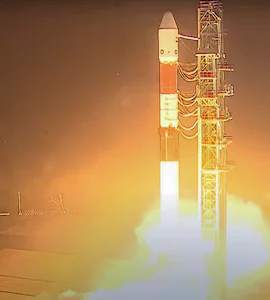ISRO launches critical space docking mission
The Indian Space Research Organisation (Isro) on Monday night launched its workhorse PSLV rocket with several satellites, including two that will carry out an ambitious autonomous orbital rendezvous and docking experiment that only a handful of space agencies have mastered.
The Space Docking Experiment (SpaDeX), ascending aboard the PSLV-C60 rocket from the windswept launch pad at Sriharikota at 10pm, achieved its most important milestone precisely 910 seconds after lift-off. At that moment, two spacecraft, each a marvel of precision engineering weighing 220kg, were delivered into an eastward orbit 476km above Earth’s surface.
In a precisely orchestrated sequence revealed through Isro’s live transmission, SDX02 (SpaDeXB) emerged first from its berth, followed by its twin SpaDeXA three seconds later.
Isro chief S Somnath, speaking of the successful launch, explained the path ahead: “The two spacecraft will gain some more distance before they begin their measured convergence for docking. We anticipate this celestial rendezvous around January 7.”
Sankaran, director of UR Rao Satellite Centre (URSC), unveiled the meticulous choreography that would unfold over the next eight days: “The calculated delay between satellite deployments ensures they will steadily drift apart in their orbital paths. By tomorrow evening, we expect a separation of 20 kilometre.”
At this juncture, one satellite will assume the role of “chaser,” its propulsion system precisely modulated to arrest the drift. “We must then await four days for the Sun’s position to align optimally. Only then will we initiate the careful reduction of distance,” Sankaran elaborated, describing how three distinct algorithms would govern this automated minuet.
